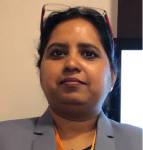Water Quality of a Central Himalayan Lake, Lake Sattal, Uttarakhand
Jump To References Section
Pollution & Waste Management
DOI:
https://doi.org/10.18311/jeoh/2014/1676Keywords:
Desirable Limit, Lake Sattal, Trophic Status, Water QualityAbstract
The present research was carried out in Lake Sattal, Central Himalaya, from 2011 to 2012 with the objectives to find out the changes in water quality of the lake in last 30 years and to determine the trophic status of the lake in order to decide the usefulness of the lake for human consumption and fish production. Lake Sattal is a warm monomictic water body with high DO concentration. About three decades ago, it was in oligotrophic state. Sixty times increase in the concentration of phosphorous as compared to previous study has been found. The increased concentration of phosphorous and nitrogen in water signify that the lake has become eutrophic. Occasional anoxia at mud-water interface was noticed during the investigation period which strongly suggests that the process of eutrophication has recently started. These could be attributed to changes in the land use patterns, extensive land clearance, agriculture and suburban development and other biotic activities in the catchment. At present, the lake can be exploited for fish production by artificial culture as the quality of water is suitable. The data on various parameters of water quality studied in the present investigation are also under the desirable limit for the human consumption after proper treatment.Downloads
Download data is not yet available.
Metrics
Metrics Loading ...
 S. Inaotombi
S. Inaotombi







